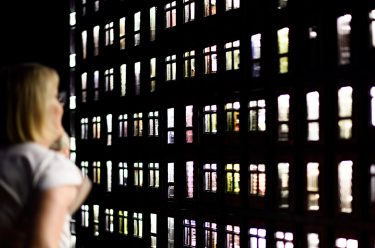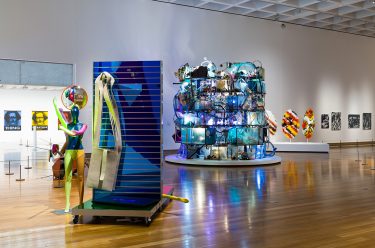‘GOMA Q’ attends to something of a wicked problem for art museums everywhere: how to engage with the local; to specify what it is without circumventing the national and global contexts in which it functions. While we didn’t conceive of ‘GOMA Q’ to argue for or to locate the essential nature of contemporary Queensland art, the Queensland experience – in some form – irreducibly lives inside it. It does so through the lived experience of those who hold ancestral ties to this country; as much as the recently or newly arrived; and it does so through the difficult-to-divine effects of upbringing and education.
There was no requirement for an artist to have been born here; and nor was their length of residency measured along a sliding scale – only that Queensland played a role in their lives. Ian Fairweather was not born here; nor was Jon Molvig or Sam Fullbrook or Lawrence Daws; but the story of modern Queensland art is incomplete without them. They are ‘of here’, regardless of their birthright or continuity of residence, as are the artists in this exhibition.
‘GOMA Q’ includes those who were born here and still live here; those from here, who perhaps trained here but now live and work elsewhere; and those not from here who have now made Queensland their home. It includes artists of Aboriginal and Torres Strait Islander descent; and non-Indigenous Australian artists from culturally diverse backgrounds. This is who, and what, ‘Queensland’ is today.
Beginning in early 2014, curators Peter McKay, Bruce McLean and I began visiting some 200 artists and gallerists to gain a deeper understanding of their work and to begin shaping an exhibition of their current practice. We set out with no overarching conceit, travelling widely, listening intently; meeting with emerging, mid- and late-career artists working in and across a vast range of media. Nothing was off-limits. We argued for and against, making difficult decisions along the way; but ultimately we sought to identify artists who, in our collective opinions, had arrived at a moment of potency and timeliness in their practice. We looked for work that represented a point of departure for established artists – a moment of shift, synthesis or resolution; and a point of arrival for emerging artists – of unexpected impact, agency or currency.
‘GOMA Q’ is the most ambitious contemporary Queensland project we have ever presented. Our hope is that our efforts have caught something that ultimately adds up, something that delineates the current condition. We felt that the exhibition needed to speak to the expanse of the field of art in Queensland, and the disparate and dispersed nature of local practice in this decentralised state. Its strength, I think, lies in its multiplicity.
‘GOMA Q: Contemporary Queensland Art‘ is at the Gallery of Modern Art (GOMA) until 11 October 2015.
Participating Artists: Vernon Ah Kee; Davida Allen; Alfredo and Isabel Aquilizan; Paul Bai; Clark Beaumont; Antoinette J Citizen; Sam Cranstoun; Julie Fragar; Chantal Fraser; Ian Friend; Kim Guthrie; Dale Harding; Jennifer Herd; Naomi Hobson; Pat Hoffie; Anita Holtsclaw; Madeleine Kelly; Moe Louanjli; Ross Manning; Mavis Ngallametta; Liam O’Brien; Lawrence Omeenyo; Brian Robinson; Monica Rohan; Teho Ropeyarn; Gordon Shepherdson; Grant Stevens; Tyza Stewart; David M Thomas; Tim Woodward; Michael Zavros
The exhibition publication GOMA Q: Contemporary Queensland Art includes the work of all generations — emerging, mid-career and senior artists — working across drawing, painting, photography, video, installation, performance, ceramics and sculpture. Also featuring a roundtable discussion with some of the state’s leaders in the arts, GOMA Q touches on many different aspects of the Queensland experience.

